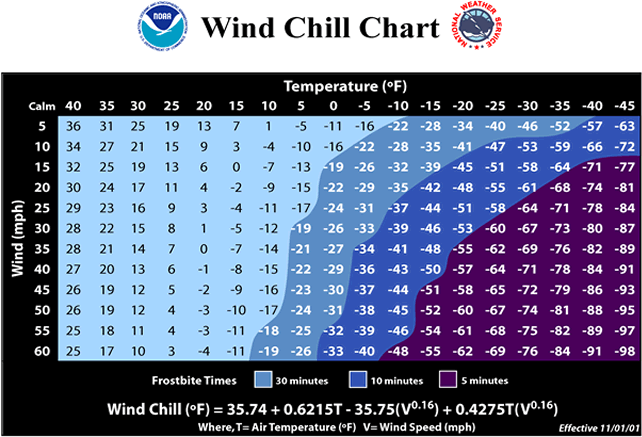Week 1: Recordable Injury

What is a Recordable Injury?

OSHA has guidelines that dictate what work-related injuries must be recorded. Severe injuries that are work-related are always considered a recordable injury. Some examples include injuries that result in days away from work, injuries that result in restricted duty, loss of consciousness, and death. Recordable injuries are a negative mark on a company’s safety record.
Companies, such as insurance companies or large contractors who are bidding out work, look at rates like the EMR (Experience Modifier Rate) and the TRIR (Total Recordable Incident Rate), which quantify the rate of workplace injuries at a company. In the case of insurance companies, they base the costs of premiums and insurability of companies applying for insurance coverage largely on these numbers.
These rates can also be a significant factor in being awarded future projects from larger companies. If a bidding company has too high of an incident rate, then these companies will not even allow the subcontractor to bid on the work. It is deemed too much of a liability for the company that is awarding the work, no matter how low the bid. A high rate of recordable injuries has very real negative business impacts. For example, the more money the company spends on insurance, or the loss of money from a lack of work, can cause the employees to be laid off, not receive bonuses, or receive less of the other perks that may be offered. The goal of safety efforts is to prevent incidents and injuries in the first place, but when an injury does occur, employees need to understand that they need to report it immediately.
Week 2: Wind Chill

Cold weather poses many hazards for those individuals who are required to be exposed to it during their work. The winter months bring the possibility of additional workplace injuries and illnesses. Some direct consequences of being exposed to cold environments include frostbite, trench foot, and hypothermia. One factor to consider when working in a cold-weather environment is the effect wind speed has on the temperature on the body.
Wind Chill Index
The presence of wind in an already cold environment can pose a deadly combination. It is important to realize the effect wind has when paired with cold temperatures. For example, if it is 10 degrees Fahrenheit outside and there are also 20 MPH winds present, the temperature actually feels like -9 degrees Fahrenheit to the body. Because of the danger wind poses in cold weather, the National Weather Service will often issue wind chill advisories and warnings when a deadly combination of wind and cold air threaten an area.
Below is a handy wind chill chart provided by the National Weather Service to determine what the temperature actually is when the wind is present. (See also- wind chill calculator)

Week 3: Leave Yourself an OUT

All too often, individuals are injured at work due to putting themselves in the line of fire or finding themselves in a place where they cannot escape danger. There are many different examples of these types of incidents. From a dropped load falling onto your foot to rear-ending the car in front of you, there are many scenarios like these incidents that are preventable if you leave yourself an out.
Defining “Leaving Yourself an Out”
What does it mean to leave yourself an out? For the purpose of this safety talk, we will define it as, “the ability to escape danger if a negative situation occurs.”
The term “leaving yourself an out” is often used in defensive driving courses. These courses always stress that no matter what the situation is, drivers need to be always on defense. Being a defensive driver allows you to avoid preventable collisions. Situations such as a car in front of you braking unexpectedly or a driver swerving into your lane are unsafe acts that can put you at risk for serious injury if you are not prepared to react. A defensive driver always has an “out” so that they can react to changing conditions around them and have a safe option to take to avoid a collision.
Other Examples of “Leaving Yourself an Out” at Work
There are many scenarios that result in injury, which are totally avoidable if the individual avoided the line of fire altogether or left themselves an out. Two common examples:
Dropped loads. Workers dropped objects safety should never put themselves in a position where a load can strike them if it falls. They should also consider giving extra space for whatever the work task is in case conditions change or something fails and the load drops in a way that is not expected.
Working around vehicles or equipment. All too often, employees find themselves in a position where an operator of a piece of heavy equipment or a driver of a vehicle does not see them. The problem with this scenario is that when the individual does not have an “out”, they will be struck. If you have an out, even if you find yourself in the line of fire, you may be able to escape danger and avoid serious injury or worse.
Summary
You should always strive never to put yourself directly in the line of fire, such as under a lifted load or behind a backing vehicle. Even when you are not directly in the line of fire, you should consider what your options are if conditions change, and a negative situation occurs. Never put yourself in a position where you cannot escape danger. Always leave yourself an “out”.
Week 4: Three Way Communication


Communication is critical to working safely and efficiently. While the process of verbal communication seems straight forward there are many issues to consider. This safety talk focuses on the issues revolving around verbal communication and using a best practice called three-way communication to improve communication between employees during work tasks.
Common Problems to Consider with Verbal Communication- There are many issues that affect whether or not our desired message is getting across to the receiver correctly. Some common issues to consider:
Culture Barriers- Many people speak English as a second language and may not understand what is being said. Even in different geographical regions of the same country, cultural barriers can exist.
Assumptions- Making assumptions about what someone is trying to say or will say can be a dangerous mistake at work. Making assumptions about what message someone is trying to convey can be affected by mood, distractions, time pressure, etc.
Mixed or Confusing Messages- Poor word choices or long-winded messages can lead to confusion.
Verbal communication through face-to-face conversations can experience any or all of the issues mentioned above. Any issue or problem with the message being sent is increased when using a radio or phone to verbally communicate with coworkers. Along with the above-mentioned issues, there are other issues when communicating with these devices, such as interference, poor reception, background noise, lack of nonverbal cues, etc.
A tool to help address the above issues to ensure that the correct message is being sent and understood is “three-way communication,” also called the repeat back process.
Three-Way Communication as a Best Practice- Three-way communication can be very effective in validating the message being sent between the sender and receiver, thus reducing the chance of a mistake occurring during a work task.
How Three-Way Communication Works
- The basic outline of three-way communication is as follows:
- The sender states his message to the receiver.
- The receiver acknowledges the communication by repeating the critical information in the communication back to the sender. If the receiver did not understand the communication, then he has to ask the sender for clarification.
- The last step is the sender confirms the message is correctly understood by the receiver, or if it is not understood, the sender must indicate that the message is not understood, and the three-way communication process must start over.
